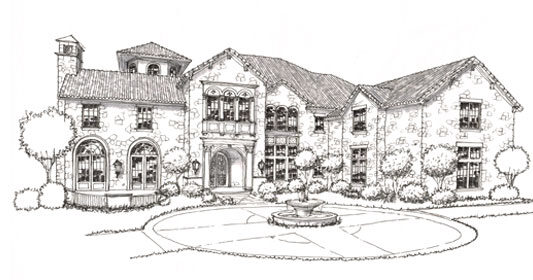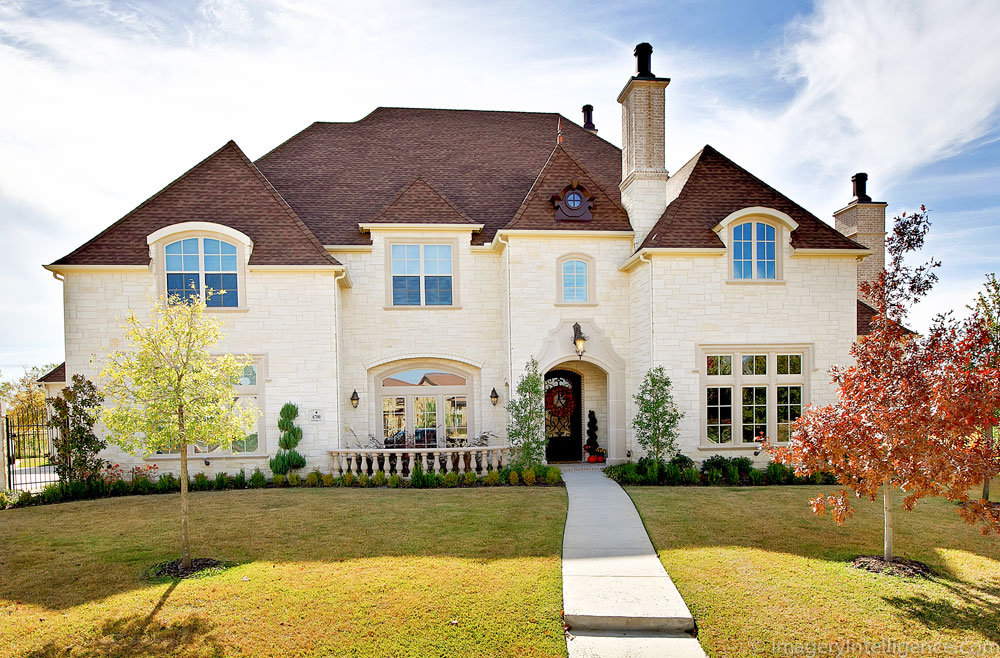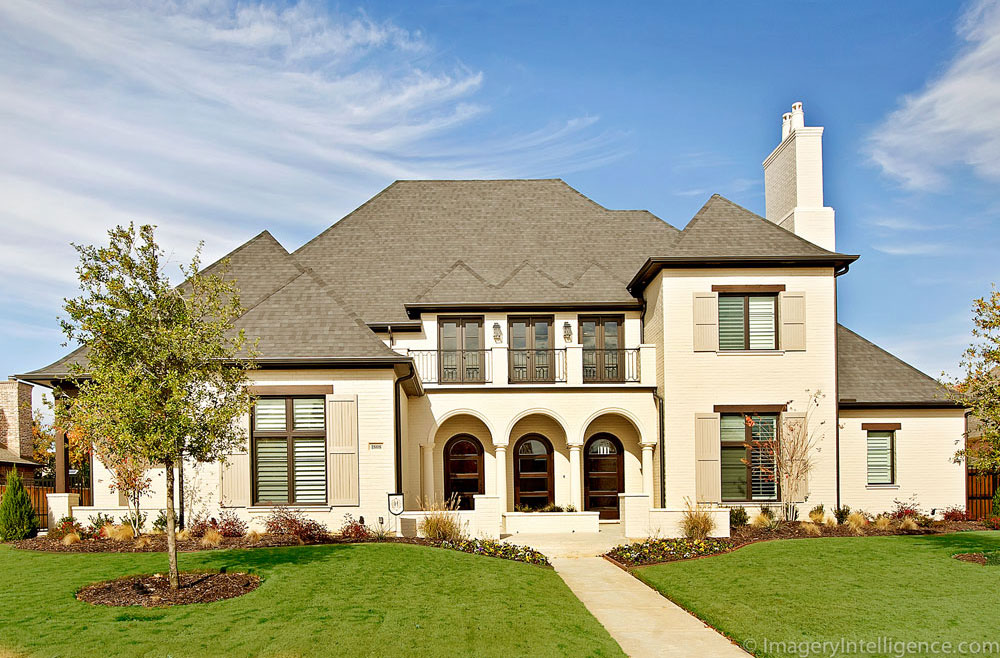
FRENCH ECLECTIC
Prior to WWI, most French styled homes built in America were of the formal, symmetrical variety, based the Chateauesque or Beaux Arts Renaissance traditions. The French Eclectic style evolved as soldiers fighting the war had the chance to see first hand the quaint cottages, small estates and rustic farmhouses of the European countryside. This, in combination with better photography and printing technologies of the era, allowed the general public to become more aware of this charming style.
French Eclectic homes became quite fashionable in the 1920s and overtook the Tudor Revival style as the 2nd most popular style to build in America (Colonial Revival remaining the number one style in America pre-WWII). America lost it’s appetite for Eclectic styles following WWII, until they began to come back into fashion after the 1970s.
CHARACTERISTICS
Since this style is based on the Medieval Architecture of Europe, it shares some characteristics with other Eclectic styles, such as the Tudor Revival style. There are, however, some significant differences. They include:
- Steeply pitched, hipped roofs (without front facing gables)
- Roof flares (or “swoops”) at edge
- Use of segmented arches are common on doors, windows or dormers
While Tudor Revival design always includes a front facing gable, a French Eclectic house always has a hipped roof with no gables. Shutters are also a common addition seen in this style. The overall characteristics of the French Eclectic style can vary greatly, but they can be typically into one of 3 categories: Symmetrical, Asymmetrical and Towered. In the towered variety, a round room (or Turret) is typically placed in the central part of the design (though they can be found less frequently at the corners as well). Exterior materials may be brick stone or stucco, and occasionally seen with wood “half timbering” as well.
Contact Us






